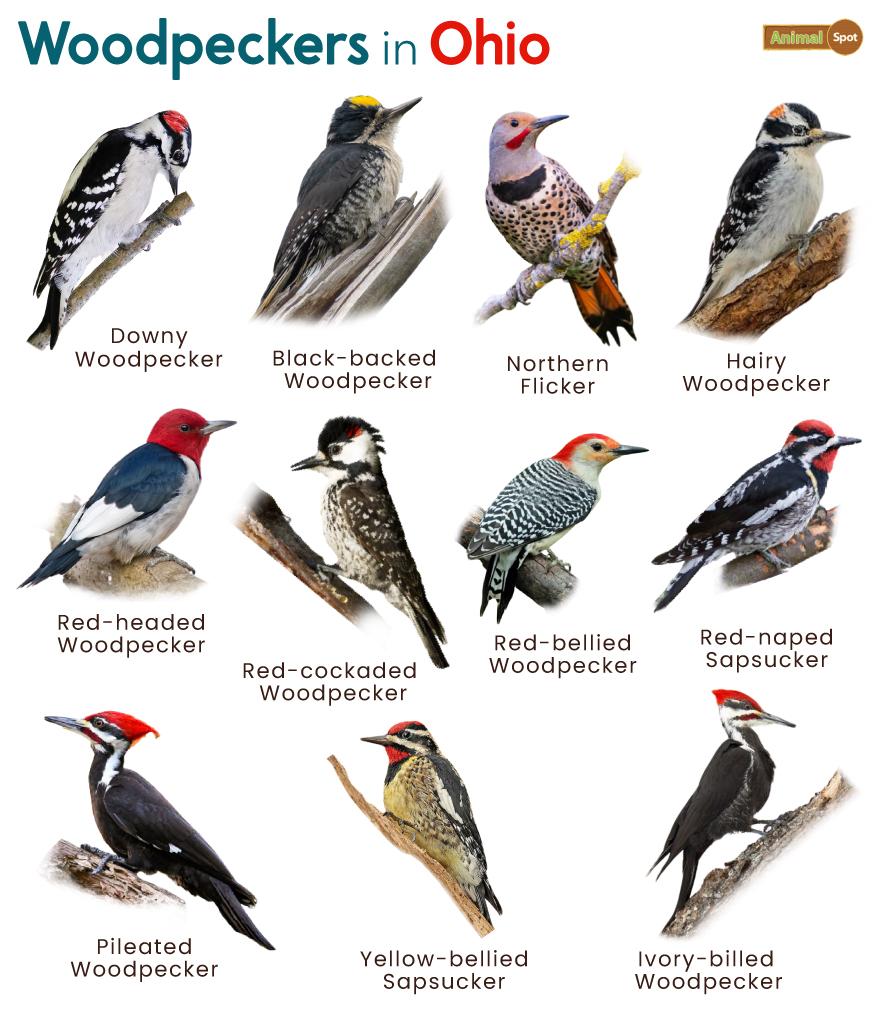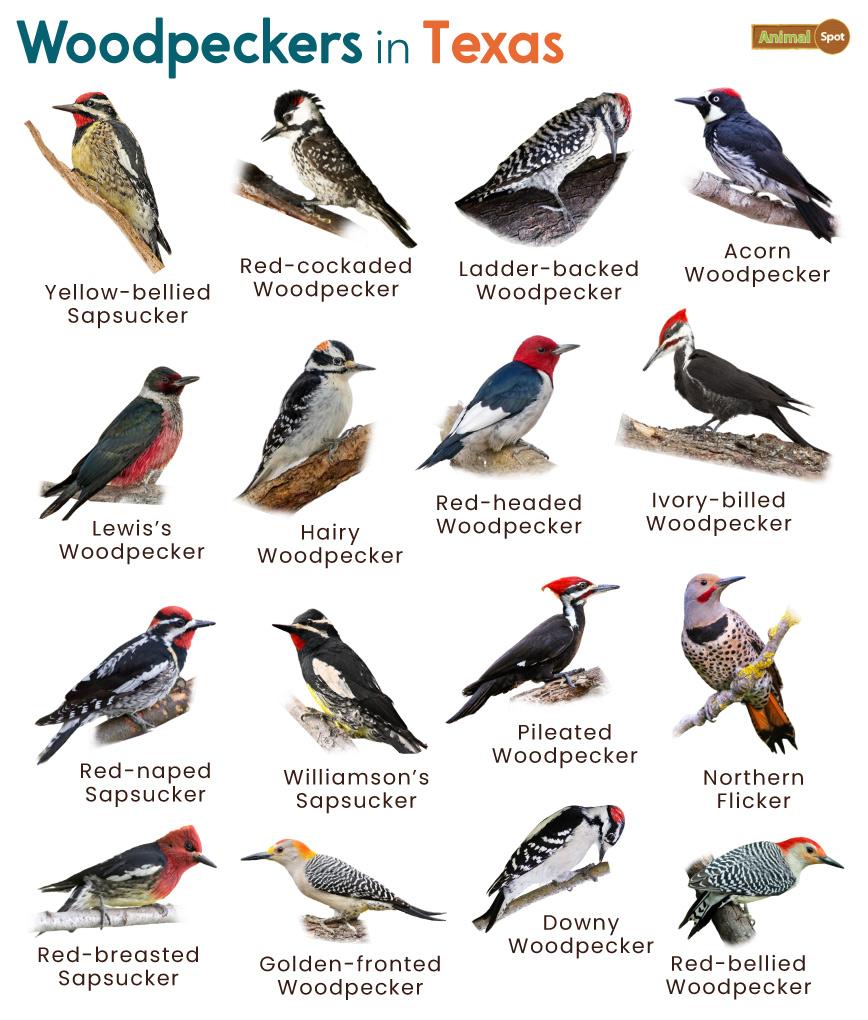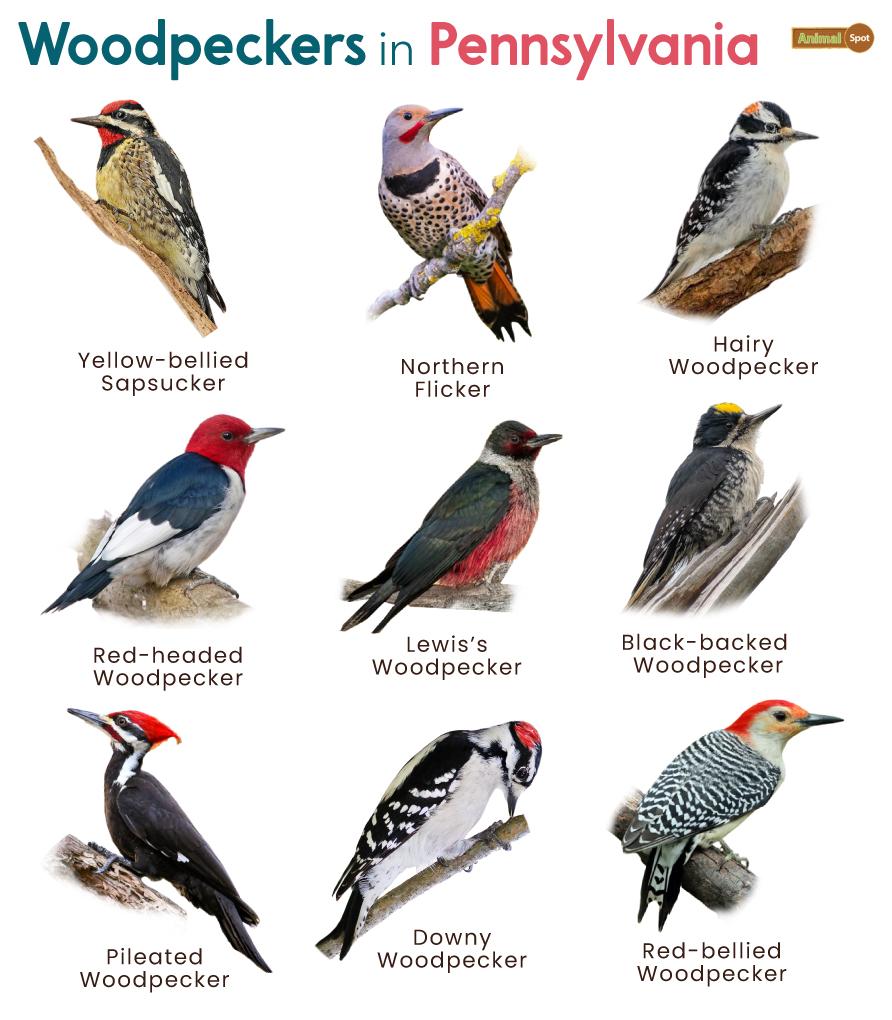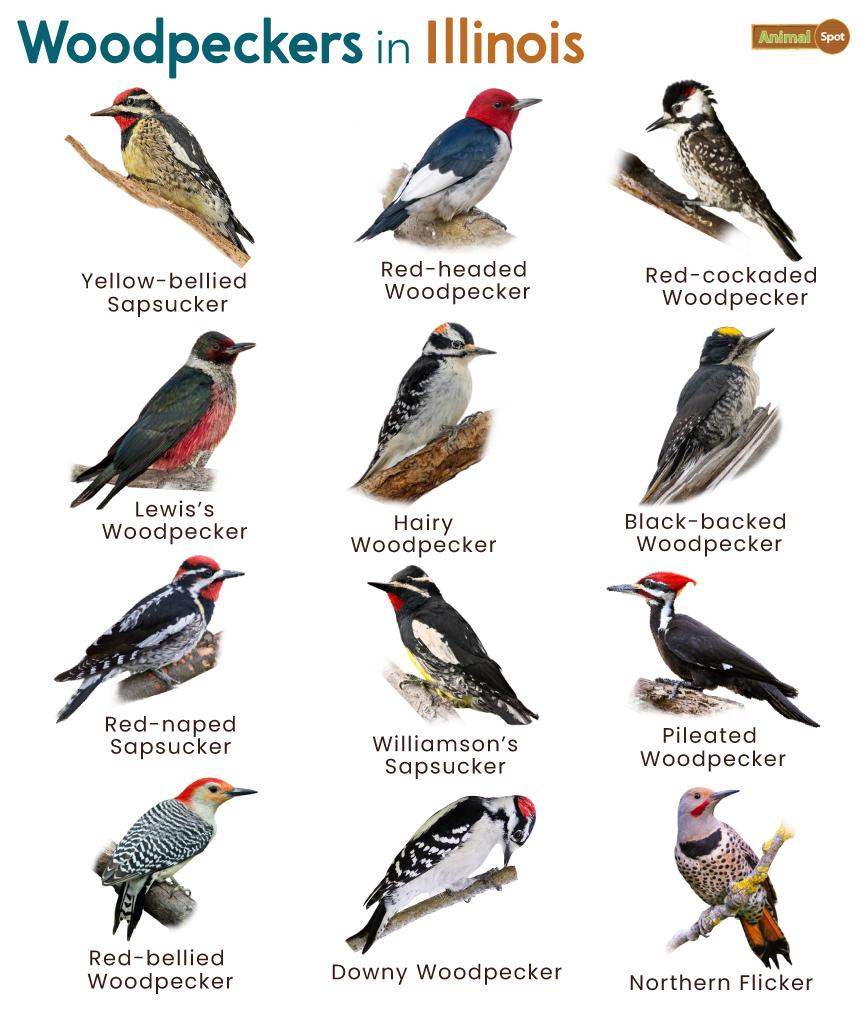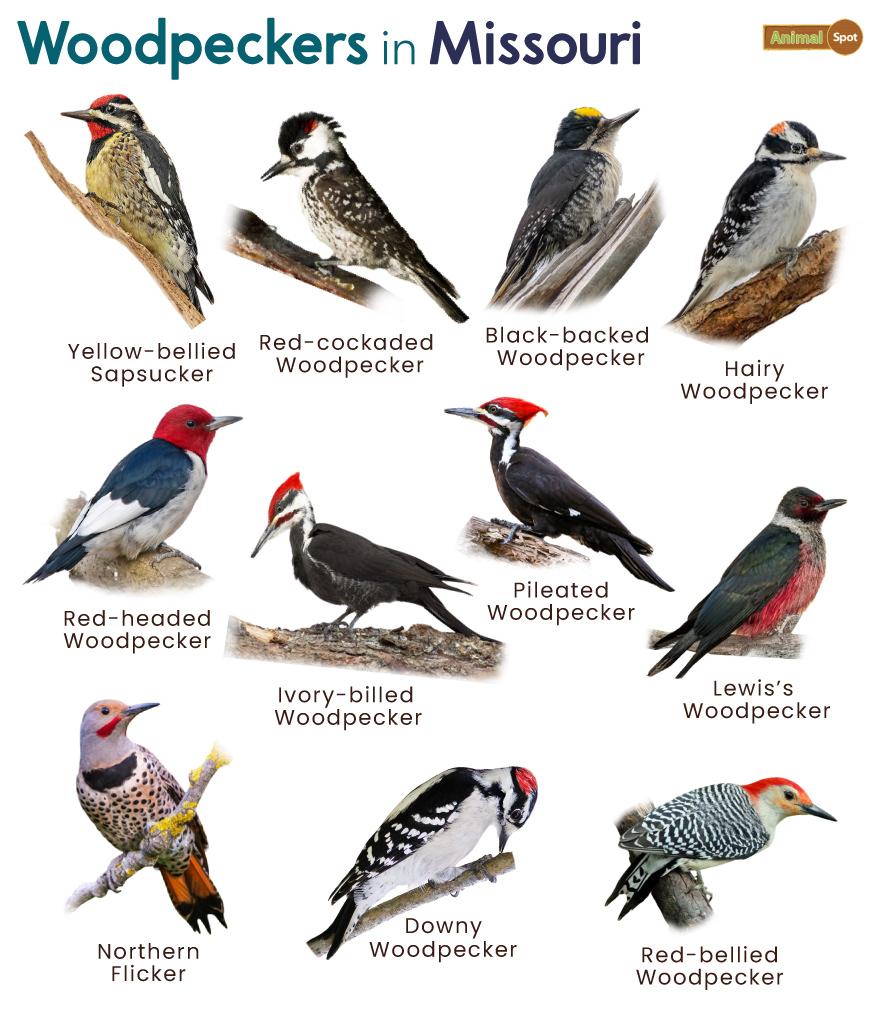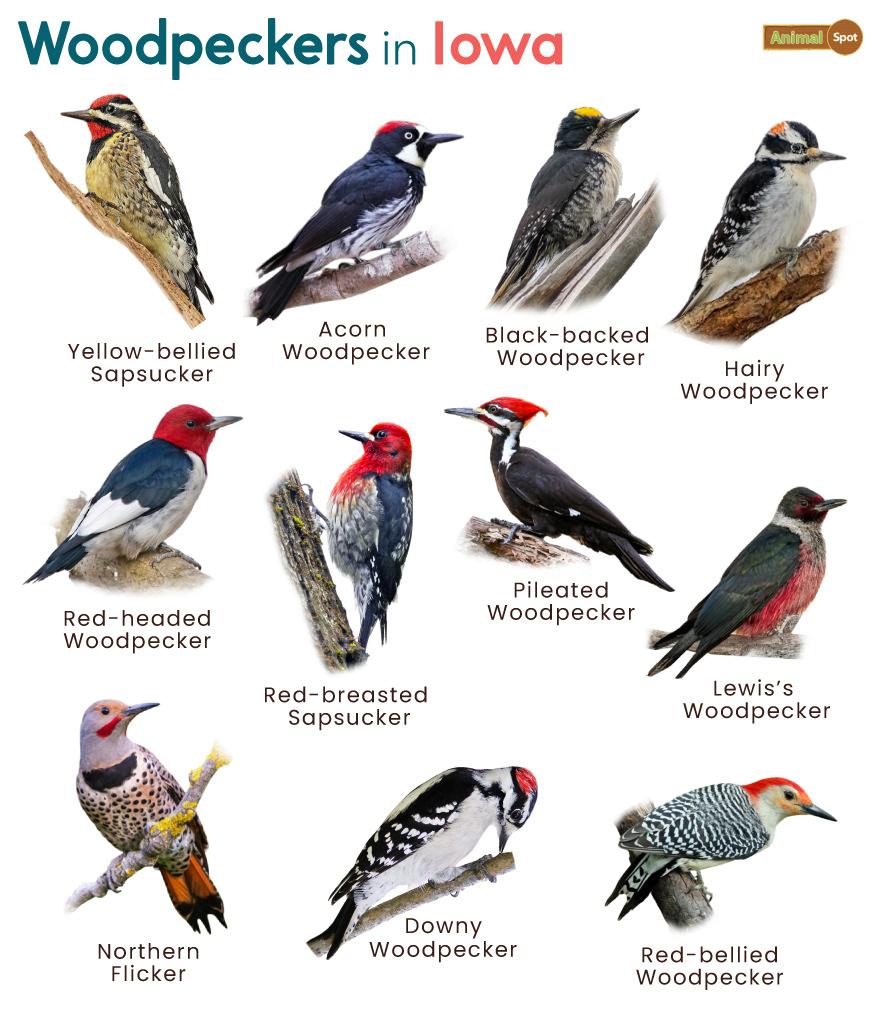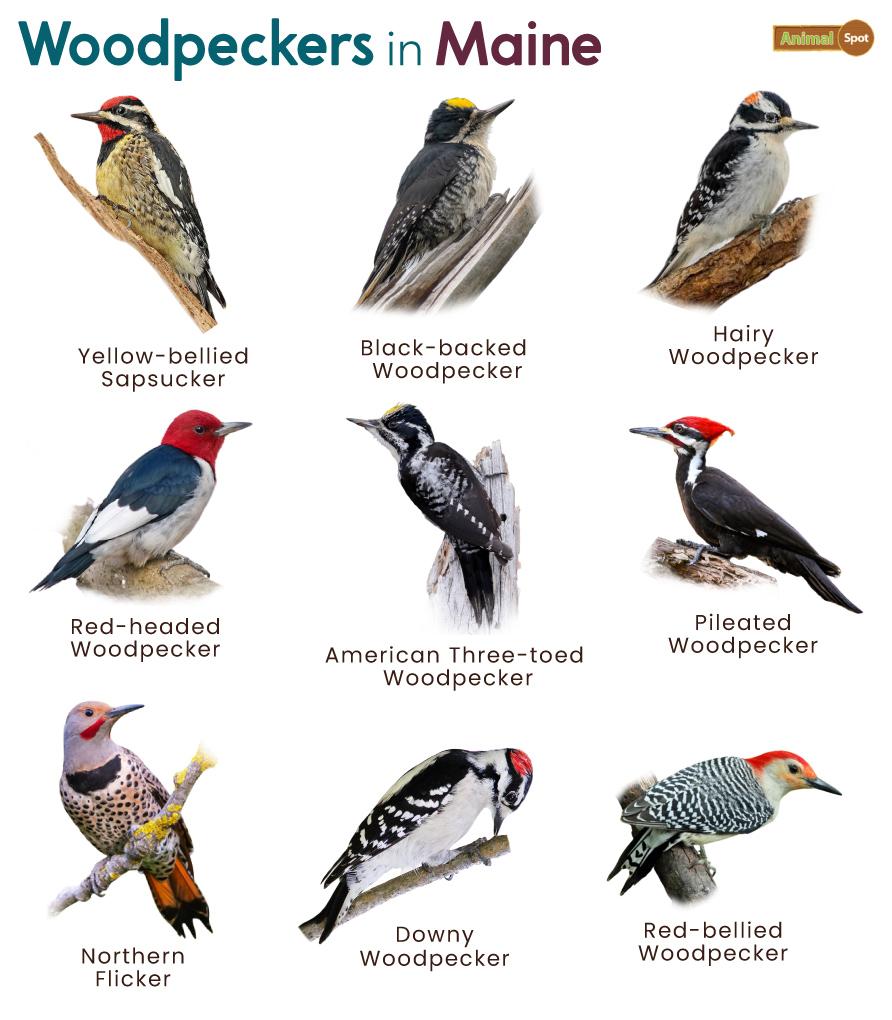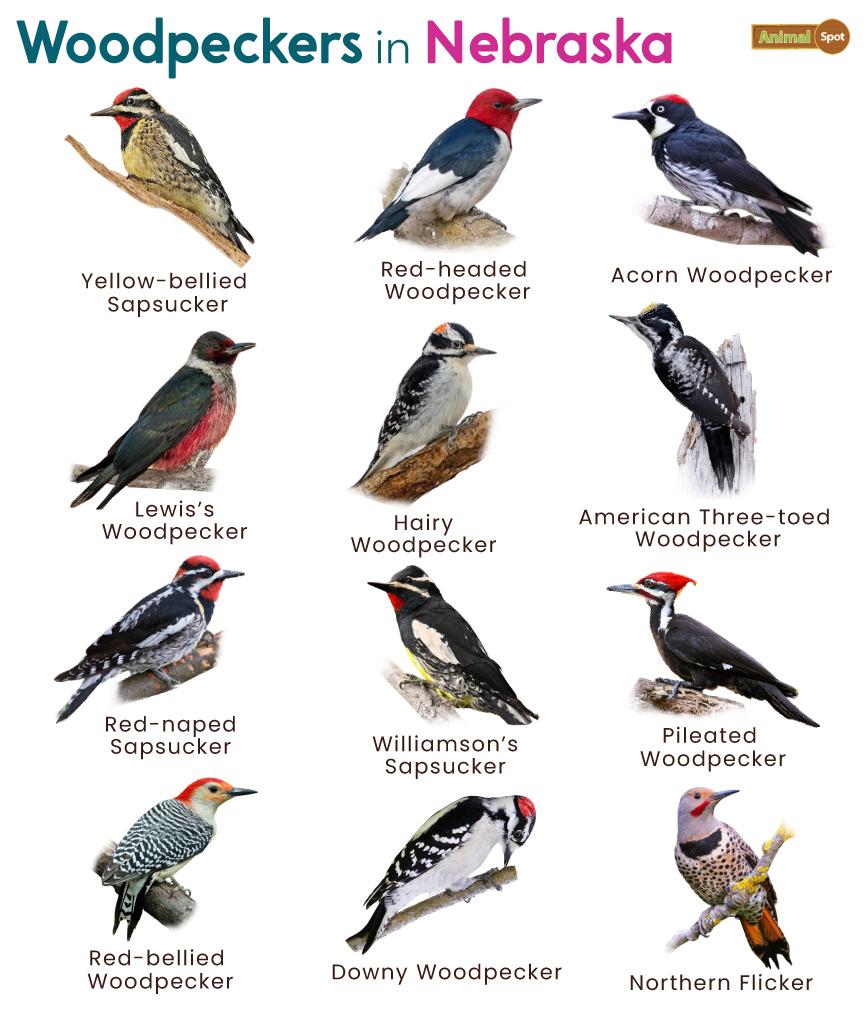| Downy Woodpecker | Small size, black and white plumage, red spot on head | Throughout the state, in wooded areas, suburbs, and parks, including the Cuyahoga Valley National Park in the northeast |
| Hairy Woodpecker | Larger than Downy, but similar plumage | Throughout the state, in wooded areas, suburbs, and parks, including the Cuyahoga Valley National Park in the northeast |
| Northern Flicker | Brown plumage with black spots, white rump | Across Ohio, in woodlands, open areas, and suburban neighborhoods. Often spotted in the Maumee Bay State Park in the northwestern part |
| Pileated Woodpecker | Large size, striking red crest, black and white plumage | Mostly in large forested areas, particularly in the south and southeast, like Hocking Hills State Park and Shawnee State Forest. Occasional in the northeast |
| Red-bellied Woodpecker | Red patch on back of head, black and white barred plumage. The female has a red patch above the bill and a red nape | Throughout the state in woodlands, parks, and residential areas. Common in cities like Cleveland and Toledo. Also in Shawnee State Forest in the south |
| Yellow-bellied Sapsucker | Yellow belly and white stripes on wings | Primarily in wooded areas, including forests, parks, like Mohican State Park in central Ohio, and suburban areas. |
| Red-headed Woodpecker | Entirely red head and neck. Males and females are not sexually dimorphic, unlike the others on the list | In various habitats like open woodlands, savannas, and orchards. Notably in Killbuck Marsh Wildlife Area in the northeast and Oak Openings Preserve Metropark in the northwest |
| Black-backed Woodpecker | Black back with white spots, white underside | Rare, primarily in coniferous forests in the northeast, particularly in the Cuyahoga Valley National Park and Wayne National Forest |
| Red-naped Sapsucker | Red patch on nape, white face, and throat | Rare, sporadic sightings in the northeastern parts |
| Red-cockaded Woodpecker | Black cap and nape, white cheek patches | Accidental, native to southeastern pine forests of the US. No confirmed sighting in the state. |
| Ivory-billed Woodpecker | Possibly extinct or extremely rare. Large size, black and white plumage, ivory-colored bill | Historically inhabited forested areas of the southeastern United States |

